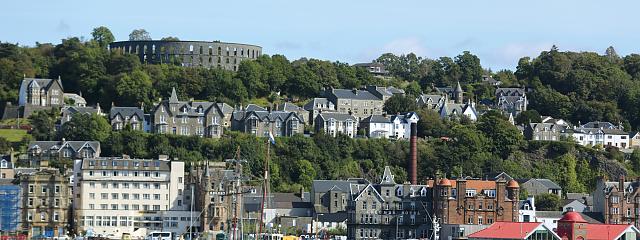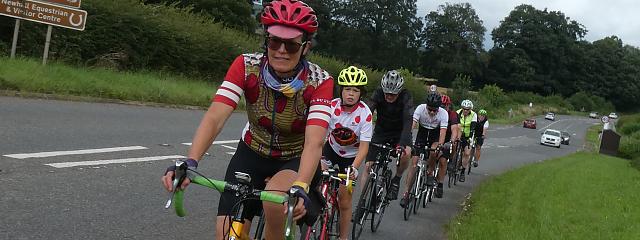Devon Coast to Coast by Josie Dew
Devon Coast to Coast by Josie Dew
Cycling author and Cycling UK vice-president Josie Dew reveals a coast-to-coast with a difference: across the beautiful county of Devon.
To many people, especially cyclists, the word ‘Devon’ conjures up leg-quaking visions of steep hill after steep hill after steep hill. So you could ask: is Devon a sensible choice for children? Definitely ‘yes’ (if your children like hills). Or ‘no’ (if they don’t). My children are mostly in the ‘no’ camp (though young Jack is addicted to fearlessly flying down any precipice on his wheels). So how did I get them to come to Devon with me ? The secret: just don’t tell them what lies ahead! Give them that element of surprise! Yes, yes, I know – cruel mother and all that, but had I said from the outset: ‘Devon’s made of nigh-on vertical short-sharp hills that will turn your legs to jelly!’ I suspect they wouldn’t have been too keen to come.
In fairness I didn’t tell them that Devon resembled a pancake. I just slightly breezed over their topographical queries, choosing to focus on the less strenuous bits they might enjoy more. Because, although Devon is spectacularly hilly, this beautiful rolling red-soiled county is full of rivers and estuaries and disused railway lines that, thanks to some forward-thinking souls, means there is mile upon mile of bike paths following these flat (or flattish) arteries across this magnificently scenic land.
The Devon coast to coast was created by Sustrans (along with Devon County Council, local authorities and landowners) and runs from Ilfracombe on the north coast to Plymouth in the south. The direct route is about 100 miles long but with diversions to find food, places to sleep and daily veering off to look at interesting things we did 138 miles. Over half of the route is along defunct railway tracks and includes the joys of the Tarka Trail, the Granite Way and Drake’s (as in Sir Francis!) Trail. The rest of the way uses generally quiet country lanes and bridleways.
We started in Ilfracombe (spectacular cliffs, coves, beaches – and, ah yes, hills. And rain – at least when we were there). We had a big damp climb up out of town resulting in a barrage of moaning and whinging from the younger party: ‘How long does this hill go on for?’ ‘Mum! Is this what it’s going to be like all the way to the other side?’ ‘Muuumm! You didn’t say it was going to be this steep!’ This didn’t bode well, I thought.
But then you hit the wooded railpath (a more gentle up) along the side of Slade Valley with its reservoirs and tunnel, which fortunately added a bit of light entertainment. At the top we took the longer route via the spectacular three-mile stretch of Woolacombe beach (a surfing hot-spot and fine location for rewarding ice-creams). Quiet up-and-down country lanes took us at one point through a ford that provided a good hour of splashing and wave-making activities, past thatched cottages and through the fetching village of Georgeham to Braunton. Then the River Taw, where flatness arrives in the form of the Tarka Trail, which follows alongside the Taw Estuary with its big views to Barnstaple.
The non-hilly Tarka Trail continues from Barnstaple all the way along the River Torridge to Bideford. Things get more wooded and gently hillier as the trail continues to the lovely cliff-top town of Great Torrington (a big up to get there but the thought of eating their way through the contents of a bakery spurred Jack and the girls onwards and upwards). More railway trails and then quiet beautiful Devon lanes through Petrockstowe and Sheepwash (where nothing really moved – it was that quiet and slow and lovely) to the happy happening market town of Hatherleigh.
Beautiful views then opened up of the dramatic rugged rocky edge of Dartmoor before more quiet country wooded lanes lead on to Okehampton. From there it’s an easy and scenic ride along the traffic-free Granite Way which includes the impressive and restored Meldon Viaduct that in the 1870s used to carry the London and South Western Railway around the northern edge of Dartmoor to Plymouth. In Lydford more hills and a gorge (complete with waterfall and whirlpools!) can be encountered. If you get a sunny day (we did) the views up above North Brentor are extensive and magnificent.
Then comes Mary Tavy (old mining village) and Peter Tavy (good inn and playground), which are linked by a bit of off-roading bridleway over the gloriously fast running and rocky River Tavy – a handy spot for an hour’s picnicking and stone-throwing. From Tavistock (Francis Drake’s place of birth) there follows the magnificent Drake’s Trail – a 21-mile cycling and walking route to Plymouth that is interspersed with fun and echoey dark dripping tunnels and incredible high-rise traffic-free bridges and viaducts. From Yelverton it’s almost all downhill to Plymouth, through the beautifully wooded Plym Valley. To alleviate the shock of the noisy traffic-laden roads of Plymouth, we followed the quiet car-free route through the National Trust property of Saltram. From there it’s over Laira Bridge and down to the sea at The Sound.


